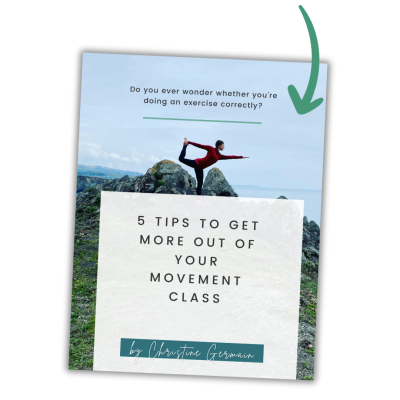Frustration: Part of the Learning

Do you find yourself being frustrated when learning something new?
Trying something new can be frustrating, as it brings us outside of our comfort zone.
Confusion and frustration are part of the learning process. However, if you learn how to replace frustration with fascination, a whole world can open itself to you!
Learning how to learn is different than taking a course or learning a skill. But how do we get to know ourselves enough that we understand how we learn things? And since movement is the first thing we do as babies, isn’t it a good idea to start to learn about ourselves through movement?
And how do we learn? Studies show that children learn better through play, through curiosity, by trial and error, and through discovery!
I am compelled to write on the topic, as more people are joining my newsletter and purchasing my pre-recorded classes, while not always knowing much about my non-conventional approach. Even when I train, I use principles of somatics like the Feldenkrais Method® that focus on learning and autonomy. It is, indeed an approach that has greatly improved my quality of life, and the life of my students.
Did you know that your brain is programmed to repeat patterns and make predictions?
It’s a bit like a survival instinct. So, when you learn something new, it is possible that you get under the impression that your brain is working against you and is resisting.
Plus, in our society, human beings are conditioned to not trust their own sensations—to not trust ourselves.
Most of us eat because it’s that time of day, rather than waiting to feel hunger. We finish our plate because we’ve been told we must, not paying attention to when we’re full. We are told to stand up straight without bringing attention; for some people, their interpretation of standing straight could inhibit their breathing and function.
So we learn at a young age to not listen to our own sensory system, but rather try to fulfill what is asked of us, relying on an external point of view that could very well be distorted.
We keep training despite an injury. After all, some of us learned to ignore pain so well that we no longer feel some parts of ourselves. And since we don’t trust ourselves, sometimes we’ll ignore injuries that could become more serious, until it’s too late. We’ve all heard stories of people who go to the hospital for a heart attack, and hear from the doctor that this isn’t the first time. We minimize symptoms, and some of us even get validation going through the pain, which is not necessarily a bad thing. There is a certain satisfaction in keeping going, despite the pain. But how do we train ourselves to be able to discern the difference between good pain and bad pain? The pain that could impact and shorten your career as an athlete or performer, versus the pain of working hard, but knowing that this is the good pain that will actually take you to the next level. As a personal trainer and pilates instructor, this is certainly the most difficult thing I see. I see people compensating and working out in a way that is inefficient, and could even end up being a waste of time, since they are limiting their range of motion, creating bad habits, and clearly ignoring the signs their body is sharing with them…signs that are so obvious to me, which I can see from the other side of the room or on zoom. But they want to work out, and breaking a sweat in the moment is more important to them than their long term health. I hear, ”I just have a bad back,” or “I have a bad knee,” and they won’t change their habits until they realize they can’t take it anymore. Or worse, they’ll wait until they can no longer perform a light workout anymore. And then start a downhill decline of their overall health.
What if we learned how to better listen to our body/mind?
In an “Awareness Through Movement®, the brain is being reprogrammed through slow motion. Going fast will get you moving on auto-pilot, whereas slowing down will allow the nervous system to make an informed decision through sensory-motor learning. I don’t demonstrate, to encourage learning by discovery, as you learned as a child, playing and teaching yourself how to do a summersault!
Most children learn to move on their tummy after many trials and errors. They learn to walk on all fours, even if nobody teaches them. The interest or the curiosity towards a toy will motivate them to find a way to get there. It’s instinctive.
As people grow older, they form habits and follow instructions on how you’re supposed to move in a certain way, trusting their teacher to the point of ignoring their own sensation and feedback, whether they’re learning yoga, dance, Pilates, or any other activity. There is a lack of critical thinking in motion. Students often at first feel lost when I give them more freedom to learn in my class, but then they learn how to learn in a holistic way, respecting their own anatomy and limitations. I aim for them to develop critical thinking and autonomy.
Feeling frustrated is a sign that your brain is engaged in learning something new.
This something new might be a new way to move, to manage a lack of balance, a new behavior, or a new skill in sport or other activity.
What if a movement class could, on top of helping you get in good shape, give you tools to cope with frustration when you’re going through a learning process? What if being willing to make mistakes set you up for long-lasting transformations? In fact, that’s what my students and clients keep repeating to me; they finally learned how to cope with pain because of the Awareness Through Movement® classes they took with me. They say that they now see options and no longer feel like they are victims of the pain, but that they can play an active role in their healing. In a way they don’t rely on me, but have become autonomous in improving their well-being and quality of life.
When you’re able to move beyond the frustration and to adopt an attitude similar to that of children, with their curiosity, there is a satisfaction. The experience that may have been seen as a struggle becomes more pleasant and is filled with a feeling of empowerment.
Thus, when you take an Awareness Through Movement® class or listen to one of my pre-recorded classes, and you hear your inner voice say: “Am I doing this correctly? Is this what the instructor meant? Is that the instruction?” Ask yourself instead how many ways there are to interpret what the teacher says, and try a few.
Because you know what? There are as many variations to interpret an instruction on movement or breathing, as there are people taking the course. Having the opportunity to explore can be, hopefully, empowering rather than discombobulating.
Perhaps you’ll find resistance in breathing a certain way, or in moving at a slower speed, or in focusing on details to refine your sensory-motor learning abilities. If that’s the case, know that this reluctance is part of the learning process. It is a bit like meditation through motion, where each person is invited to move without judgement, and to be the observer.
Learning something new can help us grow as individuals. Despite frustration and struggles, soon we realize it was all worth it.
When you participate in one of my Awareness Through Movement® classes, or even if you listen to a pre-recorded class, there is a strong chance that you’ll go through these moments of frustration.
At times, I won’t give you fully designed answers on purpose, because I know that if you ask good questions (for example, “how” instead of “why” or “what”) you’ll get your own answers. You’ll learn how to trust yourself, to gain more autonomy, and to not give full authority to the instructor or movement professional (including me).
You’ll learn to contemplate how you can adapt the teaching to your own needs, since you’ll have learned more about who you are.
My classes also offer tools to better communicate your sensations, limitations, and experiences to a health professional when necessary, so that you are better equipped for a stronger and faster recovery that will last.
It is time to tap into your full potential and move your way towards a quality of life that is optimal! You are no longer a victim!
Questions? Don’t hesitate! There is a possibility that I answer you with a question. 😊
– Christine
Photo Credits: Canva


